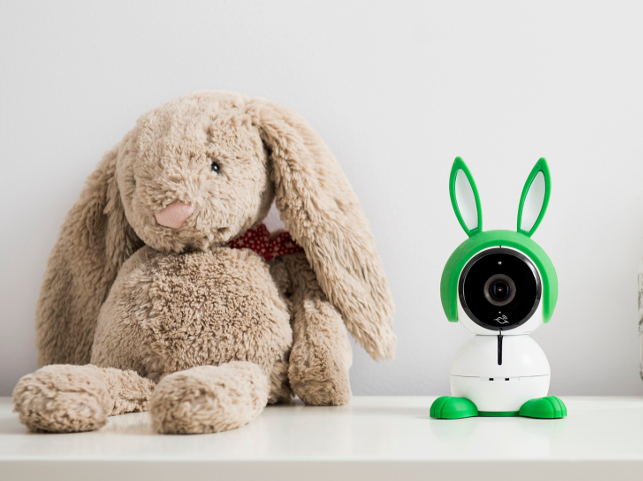House roamer
There were all manner and sizes of robots on display at CES 2017. One that stood head and shoulders above the rest (figuratively as it’s only 50cm tall) was Kuri – an intelligent robot for the home.
We haven’t quite yet entered the realms of a home robot being a Wall-E, a Rosie (from The Jetsons) or an R2D2. Think of Kuri more as a robot sidekick that patrols your interior (having first mapped it out with onboard sensors so as not to bump into furniture or reach an untimely demise by falling down the stairs), responds to voice input, monitors other connected devices, plays music or audiobooks (it can even read bedtime stories to your kids) and with a 1080p camera can check-in on the house and pets while you’re away.
Kuri was designed by Mayfield Robotics, a California-based start-up and a wholly owned subsidiary of Bosch. As its CEO and co-founder Mike Beebe says, “No one has an idea of what robots in the home are going to be so the big idea behind Mayfield was let’s go figure it out and show robots that are joyful, useful and inspiring.”
This was a lot more challenging than it sounds as Mayfield’s VP of hardware Jason Umhoefer confirms, “Probably the biggest challenge with making a robot is you have so many different pieces that have to come together in a co-ordinated fashion and work at the same time.
“And since we are making a consumer product that is at a much lower price point than what you would typically expect in a robot, you have to use cheaper components and processes and it is an engineering challenge to actually make them work.”
The industrial design team worked closely with the software team, including a former Pixar animator, to imbue Kuri with a friendly exterior that matched its ‘personality’ and the way it communicates with the user via sounds, lights and its expressive eyes.
“In terms of the look of the robot,” says Umhoefer, “I think we did a pretty good job of capturing the design intent which is almost like turning an adorable Pixar cartoon into a real-life embodiment.
“The first time we actually had a unit that was completely built up that had all of the functional parts on it and watching it move the way our animator had intended in the computer rendering, the reaction from the team, myself included, was that it was adorable,” he comments.
The jury’s out as to whether such technology is actually needed in the home but at least Mayfield has its foot in the door and maybe Rosie isn’t as far off a dream as we once thought. In the meantime, Kuri could be yours for a cool $699 (shipping starts later this year in the US).
heykuri.com

Watch this space
Baby monitoring is big business. Long gone are the days when you’d leave your baby to snooze without the prying eyes of a camera watching their every stir and snuffle.
Netgear, a global networking company, used CES to launch a few new cameras in its Arlo smart home security range including Arlo Baby. But this device is much more than a traditional baby monitor as it can be used to talk through, play lullabies, act as a night light and can even monitor the air quality.
UK industrial design consultancy Alloy worked with Netgear on creating the Arlo Baby product.
“The project began with Alloy studying the market and current product offerings to identify best in class user experience opportunities. The opportunity to give parents the very best view of the baby became a key consideration leading to the stand/wall mount concept,” says Matt Plested, design director at Alloy.
To make it ‘nursery friendly’, the Alloy team also came up with interchangeable character skins that can be removed when the child grows up and the camera then used elsewhere in the home.
The cable management concerns of parents was also a prime consideration during the design process and this led to the wireless rechargeable functionality.
arlo.com | thealloy.com

Off roader
The inspiration for the San Francisco start-up WHILL came about when one of its founders realised that a friend had a fear of shopping at his local shop because of his wheelchair’s inability to function on outdoor terrain.
So, having assembled a team of automotive designers and engineers, in 2015 WHILL launched its first wheelchair, Model A, and at CES 2017 it launched its second, Model M.
Whereas Model A is for seniors, Model M is for anyone who has a prescription for a wheelchair but still wants to enjoy an active lifestyle no matter what the terrain.
To enable it to do this, the WHILL team developed a four-wheel drive, front omniwheel technology so that the wheelchair can easily move along rough terrain such as pebbles, wood chips and branches, and can also be used within small spaces due to its tight turning radius.
“The wheelchair industry has seen very little innovation in design and technology,” says Sugie Satoshi, CEO of WHILL. “Our user-centric approach has helped us craft an innovative vehicle that empowers the disabled community to enjoy their newfound freedom.
“Our customers drive the Model M with a smile on their faces and are excited to enjoy the outdoors in ways that were previously inaccessible using standard power wheelchairs.”
whill.us






